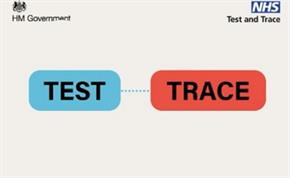
The release of the NHS Test & Trace guidance this week forms part of the public health response to the COVID recovery strategy.
It works to ensure that anyone who develops symptoms can be tested quickly to find out if they have the virus. This helps to identify close contacts of anyone who tests positive and, if necessary, advises if they are required to self-isolate. This will help to reduce the spread of the virus. The full Test & Trace guidance can be found here.
The guidance regarding what to do if you develop symptoms remains the same, you must self-isolate for at least 7 days and anyone else in your household must self-isolate for 14 days. You will then be able to arrange a test to find out if you have COVID. The new element brought in with ‘Test & Trace’ is that if you test positive for COVID you will be contacted by the NHS test & trace service and be asked to provide details of close contacts and recent places you have visited.
If you have been in close contact with someone who has tested positive for COVID, you will be alerted to this by the NHS test & trace service and be guided through what is required. Depending on the nature of the contact and exposure risks you may be required to self-isolate and be tested for COVID if you develop symptoms.
The current guidance from PHE regarding healthcare worker exposures and isolation has not been changed, however this is currently being reviewed by Public Health and NHS England. While the guidance is under review the national ambulance groups are reviewing Test & Trace guidance alongside the healthcare worker guidance to consider what, if any, additional steps can be considered to further reduce the risk of transmission of the virus.
Published 30th May 2020